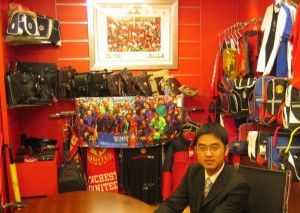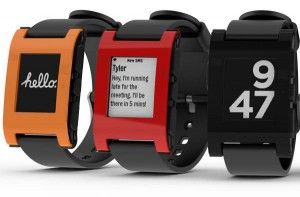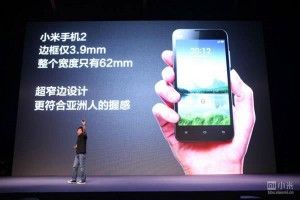

by Peter Fisk
We live in the most incredible time.
These are days of exponential change. We are now in the middle of a decade when the global population is growing faster than it ever has or will, when technology fuels unimaginable possibilities from 3D printed organs to driverless cars. We see power shifting from west to east, north to south, business to customer, and few to many. We see youthful passion outwit venerable experience, and small companies topple the big ones. The question is, are you riding these waves of change . . . or hanging onto the past?
Between 2010 and 2020, the world’s population will grow from 6.9 to 7.7 billion people, mostly in megacities of the fast-developing world. Most significant for marketers will be the rise of a huge “new middle” consumer class, neither rich nor poor, driving global GDP from $53 to $90 trillion. But this growth is not a linear extrapolation of the old world. It is a fantastic “kaleidoscope” of changing markets, new customers and priorities, new capabilities and aspirations. A tectonic mash up.

The turmoil of financial markets, collapsing banks and defaulting nations, was the dying pains of an old world order. Amidst the shake-up there are new winners and losers. In 2014 China’s real GDP growth will be 7.1% compared to 0.9% in Europe. However some markets, including Ghana and Nigeria, Brazil and Colombia, Indonesia and Vietnam will grow even faster. As Samsung launches its smart watch and Beijing is recognised as the +genius world’s leading city for renewable energies, we realise that the best ideas in business are shifting rapidly. The big investors are in Schenzen, the most sustainable innovators in Nairobi, the best fashion designers are in Buenos Aires, the best digital engineers in Hyderabad. No longer are these emerging (wrong word, I know!) markets the source of low-cost supplies, and low-budget consumers. They have youth, education, disposable income, fast growth and ambition on their side too.
 More than half the world live inside a circle based 106.6° E, 26.6° N, and within 4100km of Guiyang, Guizhou Province, in southwest China. 55% of all products are now made in more than one country, and around 20% of services too. 24% of the world’s adults have a smartphone, typically checking it 150 times per day, spending 141 minutes on it. 70% of people think small companies understand them better than large, 55% trust businesses to do the right thing, but only 15% trust business leaders to tell the truth. The majority of the world’s business value is now privately owned. Over 40% of companies in the Fortune 500 in 2000 were not there in 2010, and by 2020 over 50% will be from emerging markets. And on.
More than half the world live inside a circle based 106.6° E, 26.6° N, and within 4100km of Guiyang, Guizhou Province, in southwest China. 55% of all products are now made in more than one country, and around 20% of services too. 24% of the world’s adults have a smartphone, typically checking it 150 times per day, spending 141 minutes on it. 70% of people think small companies understand them better than large, 55% trust businesses to do the right thing, but only 15% trust business leaders to tell the truth. The majority of the world’s business value is now privately owned. Over 40% of companies in the Fortune 500 in 2000 were not there in 2010, and by 2020 over 50% will be from emerging markets. And on.
It is a period of awesomeness, of opportunities limited only by our imagination. A world where impossible dreams can now come true.
When considering the challenges for business in 2014 – it would be easy to state the obvious. Everyone talks about the power of big data, the next evolution of social media, collaborative consumption and how “millennials” are different. This is all true, and part of the kaleidoscope. But the biggest changes are the shake-up of markets – banking to healthcare, entertainment and travel – and who is doing it.
From Alibaba to ZaoZao, Ashmei to Zidisha, Azuri and Zipars, a new generation of businesses are rising out of the maelstrom of economic and technological change across our world. These are just a few of the companies who are shaking up our world. Over the last 12 months I have completed a huge research project to find the 100 brands who are changing our world, and how they do it.
“Gamechangers” are the next generation of business, disruptive and innovative, startups and corporates, in every sector and region, reshaping our world. This is the title of +genius my new book to be published in early 2014, and you can already explore the list of brands at Gamechangers.pro
This new breed of business are more ambitious, with stretching vision and enlightened purpose. They see markets as kaleidoscopes of infinite possibilities, assembling and defining them to their advantage. Most of all they have great ideas. They outthink their competition, thinking bigger and different. They don’t believe in being slightly cheaper or slightly better. That is a short-term game of diminishing returns.
Gamechangers capture their big ideas in more inspiring brands that resonate with their target audiences at the right time and place, enabled by data and technology, but most of all by rich human experiences. Social networks drive reach and richness, whilst new business models make the possible profitable. They collaborate with customers, and partner with other business, fusing ideas and utilising their capabilities. They look beyond the sale to enable customers to achieve more, they care about their impact on people and the world. Ultimately they want to create a better world.
So rather than list a set of trends for the year ahead, I’d encourage you to explore what these incredible companies are doing. How are they changing their markets, finding their own space, and playing a different game? And what could you learn from them, to seize your opportunity in the midst of this “decade of awesomeness” too?
 The DNA profiling business founded by Anne Wojcicki in San Jose went mainstream in 2013, reducing its prices from $999 to $99 and launching TV advertising.
The DNA profiling business founded by Anne Wojcicki in San Jose went mainstream in 2013, reducing its prices from $999 to $99 and launching TV advertising.
Simple “spit tests by mail” enable 23andMe to analyse your genetic profile, identifying everything from ancestry to future health conditions. Initial ads featured Mohammed Ali, and his fight against Parkinson’s, more recent versions have focused on the US obsession of family history.
Angelina Jolie’s mastectomy gave the business huge publicity, whilst the business model behind the price cuts is all about building a huge DNA database that can change the way pharma companies develop drugs, and insurance companies evaluate life risks. For business the interesting lesson is how to engage consumers in new technologies, as well as rethinking business models and their potential through partners.
In 2014 . . .business needs to work harder at applying the potential of new technologies in more human ways, building brands that ultimately make life better.
 Whilst media attention has been on Google Glass, the augmented reality headsets, the real story is about how the search business is transforming many industries at its secret “Google X” labs.
Whilst media attention has been on Google Glass, the augmented reality headsets, the real story is about how the search business is transforming many industries at its secret “Google X” labs.
“Moonshot thinking” as chief scientist Astro Teller calls it, is about making impossible dreams happen. X’s largest project is actually for driverless cars, the innovation that Sergey Brin says is most exciting of all. This is a great example of companies “thinking bigger”, searching for more significant and disruptive ideas that create new markets rather than just evolving existing products, and tweaking price and positioning within existing markets.
For business the lesson is about stretching imagination, becoming the futurists of their business, which ultimately will change perceptions of a business for investors, whilst inspiring customers and employees alike.
In 2014 . . .business leaders need to think bigger about their next opportunities. As Google says “why seek to improve by 10% when you could do things 10 x better”. Far more inspiring.
 The 107 year old Hong Kong-based company entered its 40th country this year, creating “sourcing hubs” around the world supported by its 300 offices.
The 107 year old Hong Kong-based company entered its 40th country this year, creating “sourcing hubs” around the world supported by its 300 offices.
For the first century, the business was a low cost manufacturer of clothing, but then rising standards of living made a low cost base impossible. So Li and Fung become a “network sourcing” business that connects companies (entrepreneurs and corporations) with everything they need to make their creative ideas happen. Li and Fung will find you the best investor, designer, manufacturer, distributor, merchandiser, accountant – whatever you need to be successful. 40% of the world’s clothing is now enabled by Li and Fung’s networks.
For business this is a great example of the big global trend towards “ideas and networks” companies being the most successful – working in new types of partnerships that are creative, global and agile.
In 2014 . . .“ideas and networks” businesses will give marketers the infrastructure to extend their brands into new geographies and categories at less risk and more speed. Limited only by your imagination.
 The world’s leading artificial organ business this year created a 3D-printed heart.
The world’s leading artificial organ business this year created a 3D-printed heart.
Whilst the synthetic production of muscle tissues is becoming well established, moving to core organs which would otherwise require transplants has a fundamental impact on ethics and healthcare. 3D printing still seems like a gimmick, a step up from Play-doh, but it is revolutionising many industries. Another example this year is the Urbee 3D-printed car, which can be manufactured on location, saving huge amounts of time and expense in logistics and stock.
For business leaders this is about thinking different, applying new tech to different aspects of your business, to reduce costs and time, and thereby enable better solutions, and more local propositions.
In 2014 . . . business will embrace 3d printing as a platform for offering hyperpersonalised, fast and local products in every category.
 The Pebble smartwatch was launched this year, with more fanfare, and more demand, than the Samsung Gear which arrived a few months later. Pebble started as a Kickstarter project with a goal to crowd-fund $100k. . . but exceeded that target, raising over $10 million.
The Pebble smartwatch was launched this year, with more fanfare, and more demand, than the Samsung Gear which arrived a few months later. Pebble started as a Kickstarter project with a goal to crowd-fund $100k. . . but exceeded that target, raising over $10 million.
Co-funders are now receiving their watches, which can also be bought through retailers for $149. The watch connects with both iOS and Android phones, notifying its wearer of calls, texts, emails, calendar events and social media activity. Whilst it has been praised for its stylish design, easy connections, and long battery life, users have been frustrated by the limited apps so far available. In many ways it is part of a new alert-device category, alongside the likes of FitBit, Jawbone and Nike Fuel.
The big lesson for business lies in the potential of crowds in pre-launching new products, whilst also in defining new categories which sit in the gap, or on the bridge, between others.
In 2014 . . . business will move to the next level in customer collaboration, co-funding, codesigning, co-building, co-marketing, co-supporting, co-rewarding.
 Whilst 2013 has been a year of questions for some Apple fans, whether Tim Cook can sustain the incredible growth of the Cupertino circus, and uncertainty over the refreshed iOS7 design from Jony Ive, in other ways Apple has made more impact than ever.
Whilst 2013 has been a year of questions for some Apple fans, whether Tim Cook can sustain the incredible growth of the Cupertino circus, and uncertainty over the refreshed iOS7 design from Jony Ive, in other ways Apple has made more impact than ever.
Most significantly, the iPad has become the platform for a multitude of adapted business activities, enabling everyone from airline crew to hospital doctors to change the way the work, faster and cheaper, smarter and more human. The iPad Mini for example has been a revelation to doctors who can now slip it into their white coats and have all the information they ever need about patients, conditions and medication, instantly at the patient’s bedside.
For business, an example of the benefit in working through the niche applications of products to transform different customer experiences.
In 2014 . . .business leaders will need to recapture their thirst for disruptive innovations, realising that derivative price-point thinking is a danger to their brands, like it is to Apple. Think bigger and bolder.
 Cambridge-based designer of microprocessor has long been the arch rival of Intel.
Cambridge-based designer of microprocessor has long been the arch rival of Intel.
ARM’s business model is about designing the patterns and then outsourcing the manufacturing, rather than actually making the chips like Intel. This means ARM can work more globally and flexibly with many more partners, faster to respond to new trends. ARM’s low-energy products are more suited to small devices like smartphones and tablets, whereas Intel has focused on larger computers. The small and smarter trend in smartphones, watches, tablets, favours ARM, and this year saw the British company exceed the sales of its big rival for the first time.
In 2014 . . .business will need to become more IP savvy, understanding what it really is that they do uniquely, and how they can monetise this in more effective ways. Partnerships become ever more important in connecting the right ideas with global markets.
 AG Lafley returned as CEO, the consumer goods giant having lost its way trying to embrace the digital world with soap and cosmetics.
AG Lafley returned as CEO, the consumer goods giant having lost its way trying to embrace the digital world with soap and cosmetics.
Lafley’s first action was a letter to all staff reminding them of what matters most – the consumer. The simplicity of his obsession saw a tripling of P&G’s market value in his previous decade as CEO, and whilst it doesn’t mean the consumer is always right, it does mean that taking a consumer rather than product perspective is the foundation of more relevant marketing, and successful innovation. His letter to employees (read it on my blog!) is a fabulous reminder of what matters most to marketers, inside P&G and everywhere else too.
In 2014 . . .business people everywhere should remember that despite the dazzling technologies and accelerating innovations, customers (or consumers) are still “the boss”.
 CEO Mark Parker is a marketer, and an example of the trend towards more business leaders coming from a background that is creative and consumer orientated.
CEO Mark Parker is a marketer, and an example of the trend towards more business leaders coming from a background that is creative and consumer orientated.
Whilst Nike celebrated 25 years of its “Just do it” slogan this year, Parker reiterated his belief that the business is not about shoes and clothing, but about what it enables its consumers to do. Just like Phil Knight said from Nike’s founding, on every tag inside the shoe, Nike is dedicated to delivering your best performance, be that running a faster marathon, a more enjoyable gym workout, monitoring your fitness level with Nike Fuel, or sharing experiences with Nike+ devices and software. For business, it is about brands defining the consumer’s aspirations, extending for beyond a product-centred core.
In 2014 . . . every business needs to add value beyond their core – additional products and services that enable customers to achieve more. They will also become ever more influential in business, driving creative and customer thinking, but also becoming the most likely CEOs.
 Last year it was about space jumps, with the Stratos Project, this year Red Bull Media House moved to the heart of the business, with CEO Dietmar Mateshitz pronouncing that Red Bull is firstly “a media brand that currently makes drinks”.
Last year it was about space jumps, with the Stratos Project, this year Red Bull Media House moved to the heart of the business, with CEO Dietmar Mateshitz pronouncing that Red Bull is firstly “a media brand that currently makes drinks”.
A little like Nike, this reflects brands refocusing around consumers, their aspirations and experiences, rather than being a label of a company or product. It also reflects a growing trend for marketers to take their core creative process in-house. In an ideas world, no longer can they afford to outsource their creativity to agencies who need to work harder and together, in connecting with consumers. Whilst a collaborative process, Red Bull recognised that ideas are their core asset which they need to nurture and grow.
In 2014 . . . business leaders cannot outsource their creativity, to agencies or consultants, they need to be bigger and better thinkers themselves. They need to encourage, seek and connect creative thinking in everyone, and more holistic innovation and execution.
 The death of a technology giant, perhaps not surprising to those of us smartphone users who let go of our Nokia’s some years ago.
The death of a technology giant, perhaps not surprising to those of us smartphone users who let go of our Nokia’s some years ago.
But what was interesting is that this is the company who had transformed itself so many times before – from being Finland’s largest forestry company, to being the leading shipbuilder, it grasped the opportunity of mobile tech. But then it let in a generation of people who were blinkered by scale and success, and lost the ability to keep changing.
In 2014 . . . business needs to be ever more agile, questioning everything from what market they are really in, to who their competition actually is. The answers may be unconventional, but also stimulating.
 The Chinese Apple-imitator is growing like wildfire in Asia, fuelled by the Steve Jobs-like on-stage antics of its CEO Lei Jen.
The Chinese Apple-imitator is growing like wildfire in Asia, fuelled by the Steve Jobs-like on-stage antics of its CEO Lei Jen.
Wowing the crowd, jeans and turtle neck, rock music and magical words. Whilst it benefits from the protectionism of its government, Xiaomi can ride a huge wave of growth as Chinese open their eyes to consumerism with new aspiration and wealth. By securing preferential deals with Chinese parts manufacturers it also has the potential to eventually outplay Apple.
In 2014 . . . every business needs to look east not west, for new customers and competitors, but also inspiration. Gone are the hero-worshipping days of Made in USA, China and India, and beyond, now have the creativity as well as efficiency to look up to. Whilst emerging markets have emerged, and grow fastest, we should also focus on doing more for the key markets of young and old, women and urban, ethnic and poor.
Are you ready?
These are just a few of the brands who are moving from the margins into a new mainstream, shaking up markets in their own vision, with reverberations felt across the world.
Business is changing too, enabling and responding to all this change. But you need to be a speedboat not a supertanker in today’s world, fast and agile, able to change direction and decisions, to out-think not out-scale the competition. It’s about outside in thinking, understanding the outside then aligning within, identifying the best opportunities and then finding the capabilities to deliver. Being bold, expeditionary and audacious.
It’s time for business leaders to harness the power of ideas, brands and networks, to make the world a better place. They need to apply insight and imagination to create better ideas, embracing networks to reach new audiences with new partners, aligning the organisation internally, and become the driving force of disruptive innovation and accelerating growth.
We live in a time of awesomeness. An incredible time to be lead a business.
[box]Peter Fisk’s new book “Gamechangers: Are you ready to change the world?” will be published by Wiley in early 2014. Peter will be providing further extracts of the book, and exploring more of the innovative companies who are rethinking marketing and shaking up the world. To get latest updates and explore the full list of 100 next generation brands go to Gamechangers.pro © Peter Fisk 2013 Peter Fisk is a global branding, marketing and innovation expert. He is founder and CEO of the Genius Works, the accelerated innovation firm. In 2013 he entered the Thinkers 50 Guru Radar, recognising the world’s best new business thinkers. He is a strategic consultant, inspiring keynote speaker, and best-selling author of six books including Creative Genius, People Planet Profit, and Gamechangers to be published in 2014. Email: New book: www.Gamechangers.pro More information: www.theGeniusWorks.com[/box]

Thinkers50 Limited
The Studio
Highfield Lane
Wargrave RG10 8PZ
United Kingdom

Thinkers50 Limited
The Studio
Highfield Lane
Wargrave RG10 8PZ
United Kingdom

Thinkers50 Limited
The Studio
Highfield Lane
Wargrave RG10 8PZ
United Kingdom
| Cookie | Duration | Description |
|---|---|---|
| LANG | 9 hours | Linkedin set this cookie to set user's preferred language. |
| nsid | session | This cookie is set by the provider PayPal to enable the PayPal payment service in the website. |
| sp_landing | 1 day | The sp_landing is set by Spotify to implement audio content from Spotify on the website and also registers information on user interaction related to the audio content. |
| sp_t | 1 year | The sp_t cookie is set by Spotify to implement audio content from Spotify on the website and also registers information on user interaction related to the audio content. |
| tsrce | 3 days | PayPal sets this cookie to enable the PayPal payment service in the website. |
| x-pp-s | session | PayPal sets this cookie to process payments on the site. |
| __cf_bm | 30 minutes | This cookie, set by Cloudflare, is used to support Cloudflare Bot Management. |
| Cookie | Duration | Description |
|---|---|---|
| l7_az | 30 minutes | This cookie is necessary for the PayPal login-function on the website. |
| Cookie | Duration | Description |
|---|---|---|
| CONSENT | 2 years | YouTube sets this cookie via embedded youtube-videos and registers anonymous statistical data. |
| _ga | 2 years | The _ga cookie, installed by Google Analytics, calculates visitor, session and campaign data and also keeps track of site usage for the site's analytics report. The cookie stores information anonymously and assigns a randomly generated number to recognize unique visitors. |
| _gat_gtag_UA_10408481_1 | 1 minute | Set by Google to distinguish users. |
| _ga_ZP8HQ8RZXS | 2 years | This cookie is installed by Google Analytics. |
| _gid | 1 day | Installed by Google Analytics, _gid cookie stores information on how visitors use a website, while also creating an analytics report of the website's performance. Some of the data that are collected include the number of visitors, their source, and the pages they visit anonymously. |
| Cookie | Duration | Description |
|---|---|---|
| NID | 6 months | NID cookie, set by Google, is used for advertising purposes; to limit the number of times the user sees an ad, to mute unwanted ads, and to measure the effectiveness of ads. |
| test_cookie | 15 minutes | The test_cookie is set by doubleclick.net and is used to determine if the user's browser supports cookies. |
| VISITOR_INFO1_LIVE | 5 months 27 days | A cookie set by YouTube to measure bandwidth that determines whether the user gets the new or old player interface. |
| YSC | session | YSC cookie is set by Youtube and is used to track the views of embedded videos on Youtube pages. |
| yt-remote-connected-devices | never | YouTube sets this cookie to store the video preferences of the user using embedded YouTube video. |
| yt-remote-device-id | never | YouTube sets this cookie to store the video preferences of the user using embedded YouTube video. |
| yt.innertube::nextId | never | This cookie, set by YouTube, registers a unique ID to store data on what videos from YouTube the user has seen. |
| yt.innertube::requests | never | This cookie, set by YouTube, registers a unique ID to store data on what videos from YouTube the user has seen. |
| Cookie | Duration | Description |
|---|---|---|
| DEVICE_INFO | 5 months 27 days | No description |
| loglevel | never | No description available. |
| m | 2 years | No description available. |
Thinkers50 Limited has updated its Privacy Policy on 28 March 2024 with several amendments and additions to the previous version, to fully incorporate to the text information required by current applicable date protection regulation. Processing of the personal data of Thinkers50’s customers, potential customers and other stakeholders has not been changed essentially, but the texts have been clarified and amended to give more detailed information of the processing activities.